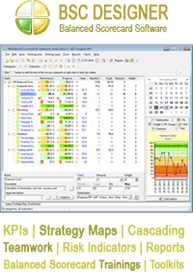Uses of a KPI Case Study
Management will always have to face some particularly knotty problems at one point or another. A lot of times, just identifying their causes will pose difficulties, which can lead to questions about the efficiency of the entire management system. This is especially true of large companies where there are so many interrelated activities going on all at the same time. A problem in one area can infect the rest and bring the organization into a brink of disorganization. Sometimes, managers get complacent and are not able to read developing issues accurately, which can prove disruptive later on. This happens to the best of them, even to organizations with well-entrenched KPIs. Experts suggest that a good way to solve a problem of this nature is to dissect organizational KPIs through a KPI case study.
KPIs are supposed to serve as a guide for all staff, management level or otherwise, by telling them what to do, how to do it, and when to do it. KPIs also provide mechanisms for monitoring of activities expected to accomplish outputs that are based on predetermined objectives. Thus, in conducting a case study, it would be wise to begin first with how well the monitoring system has functioned before moving on to more serious levels, like questioning the inappropriateness of plans and even goals.
Monitoring is one management function that many organizations often take for granted; but the fact is, one cannot effectively measure performance without an efficient monitoring system in place. One has to know the quality of information being generated by the system and determine their usefulness to decision making. Otherwise, the KPIs themselves, which take a lot of effort to formulate, end up largely useless. A study that initially identifies a monitoring problem does not stop there. It only makes the next tasks more difficult because, of course, individual performance is greatly influenced by the quality of communication between subordinates and superiors, and between departments.
This does not mean that the study cannot make judgment on the quality of outputs, although had performance been monitored closely, results could have been better. But the fact remains that people are accountable for programs or activities assigned to them. Thus, in making judgments on effectiveness of programs based on desired outputs, assessment of individual performance on tasks related to said programs should always be a primary factor. A study cannot just declare a program or a piece of equipment to be inappropriate without taking into consideration how people do their jobs.
As can be seen, a case study of existing management KPIs is not that simple because they are basically designed to ferret out issues that impede operations or to identify best practices. With these objectives, case studies are supposed to be in-depth. Hence, in the case presented above, when all else have been duly studied – monitoring systems, staff performance, effectiveness of programs, and strategies – the case study, if needed, will move on to even more serious matters, like the validity of the plans or objectives. Because an unrealistic plan or objective will mean that established measures from which performances are based are unrealistic as well.
A KPI case study is an essential part of management monitoring and evaluation systems. It can be on a limited scale, perhaps limited to personnel administration, a marketing program, and others, depending on perceived needs. But it still has to be in-depth, as it is expected to result to helpful recommendations.
—
If you are interested in Kpi Case Study, check this web-site to learn more about metric case study.


